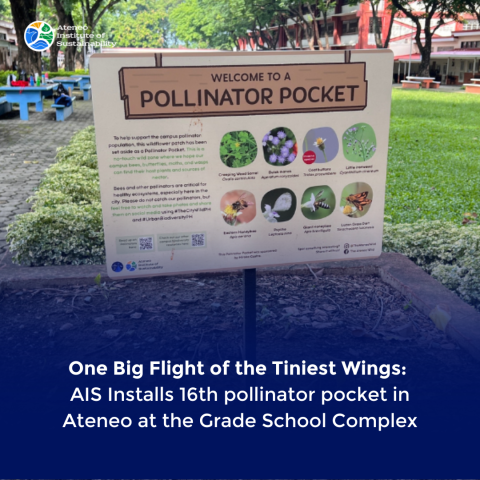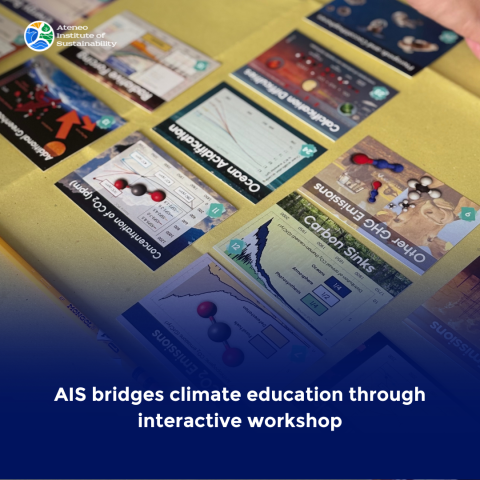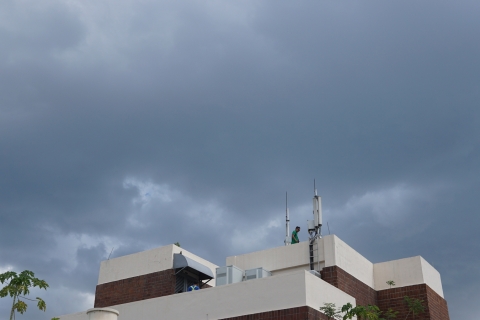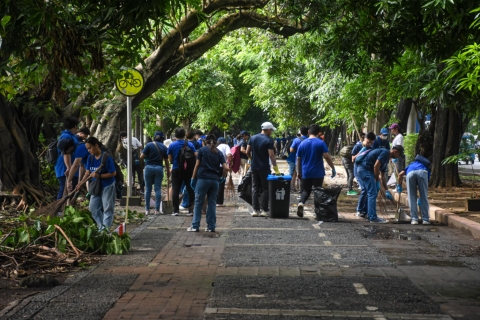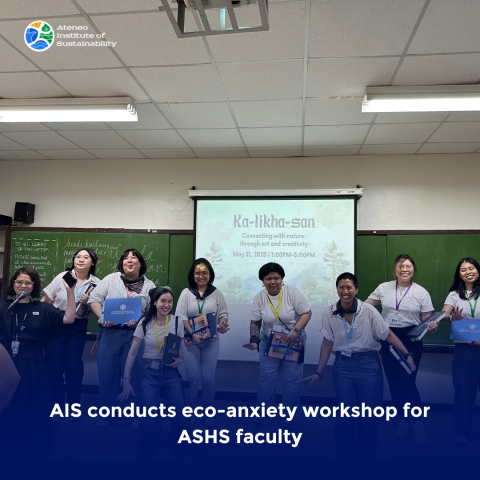The Ateneo Wild: Urban Biodiversity Conservation at the Ateneo de Manila University
23 Jul 2019 | Abby Favis and Trinket Constantino
We often don’t think of the city as a habitat for fascinating wildlife, but it can be! Urban biodiversity – or the variety of life found in cities – are important components of city life. City trees help refresh the air and reduce pollution, and their canopies protect us from the heat or rain. They also provide shelter for other creatures such as birds, insects, epiphytes, and fungi. All of them contribute to making the city more comfortable, beautiful, and healthy. Unfortunately, with the rapid pace of urban development, green spaces are disappearing or becoming more fragmented. Thus, preserving, restoring, and celebrating these remaining green spaces – especially in cities – are important in ensuring both urban ecological services as well as social well-being.
The Ateneo de Manila University is home to a variety of wildlife that provides ecological and socio-cultural services to the community. Located beside a busy thoroughfare and surrounded by commercial and residential areas, it makes up part of one of the last remaining green corridors in Quezon City. Its sprawling campus – with around 16 hectares of forested areas and around 27 hectares of open fields and green spaces – is a safe refuge for urban wildlife. Some of them are new discoveries – such as the recently identified water beetle (Hydranea Ateneo). Some are rarely seen in the city – like the high-soaring Philippine serpent eagle (Spilornis holospilus) and the colorful bagras tree (Eucalyptus deglupta). Some of them are common like the cheerful Eurasian tree sparrow (Passer montanus) and the broad-canopied acacia trees (Albizia saman). All of them are important!
The campus fields, forests, and waterways are home to 70 documented endemic, resident, and migratory bird species and over 5o native and even endemic plant species – with many more left to be added to the biodiversity inventory. All are valued neighbors that contribute significant ecosystem services. Green spaces have also been documented to help alleviate stress and anxiety, and increase creativity and feelings of positivity, giving the campus a safe and conducive atmosphere for study, work, and play.
Our campus biodiversity is a vital part of the University’s sustainable operations and must be managed properly – which first requires species identification, inventory, and mapping. In addition, there is a large potential to feature campus biodiversity in education and formation programs for both students and employees. Providing them with more opportunities for engaging with nature will contribute to deepening their awareness and appreciation for creation, which potentially enables the formation of environmentally responsible behaviors.
The Ateneo Wild Project aims to increase the awareness of community members on existing fauna and flora on campus and to provide an avenue for reporting wildlife sightings. The Ateneo Wild takes advantage of social media to highlight the fascinating wildlife on campus that the community might not yet be aware of. Every day, campus flora and fauna are featured on the Ateneo Wild Facebook and Instagram accounts. This includes a photograph, species identification, a short caption about the featured species, and an invitation to contribute or report sightings of other wildlife encountered on campus. Every Wednesday, community contributions are featured, and contributors are acknowledged as part of #WednesdayShare.
The Ateneo Wild social media account is also a means to advocate for prioritizing native species (organisms that are found in certain locations due to natural processes such as wind, water, or animal dispersion) and endemic species (species that are unique to a specific area) over alien invasive species (species that are beyond their natural range and pose a risk to native wildlife and ecosystem balance).
Aside from social media, guided Bird, Tree, and Nature walks are conducted monthly to encourage community members to spend more time in nature and to experience seeing campus wildlife firsthand. Community members are partners in urban biodiversity conservation and this citizen science approach allows us to generate campus data and to cultivate new understanding and appreciation of the importance of green spaces. Not only does this contribute to enhancing campus grounds management it also increases community members’ contact with nature. This collaboration between science research and the non-traditional science community is a pioneering effort that leads to better monitoring and management schemes as well as an improvement in the environmental experience of community.
The Ateneo Wild’s work has just begun, and there is much more of the campus to discover and who knows what else we will find. What’s for certain is that the Ateneo de Manila University is home to fascinating wildlife and ensuring that they are given the space to flourish is a community effort!
Abigail Marie Favis and Maria Katrina Constantino are the co-founders of The Ateneo Wild. Abby Favis is a faculty member of the Department of Environmental Science and the Program Manager for Campus Sustainability at the Ateneo Institute of Sustainability. Trinket Constantino is a faculty member of the Department of Biology and a member of the Wild Bird Club of the Philippines.
